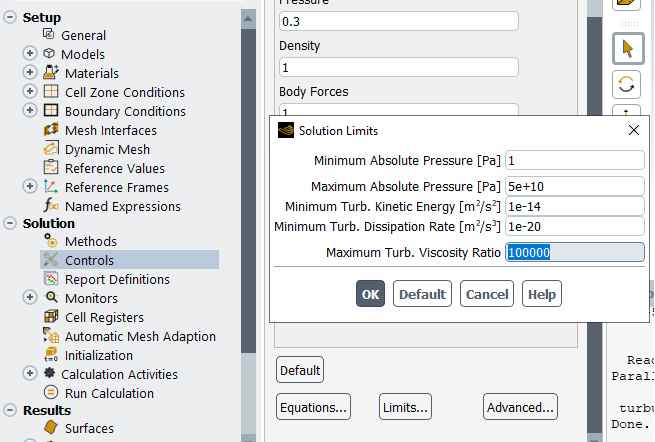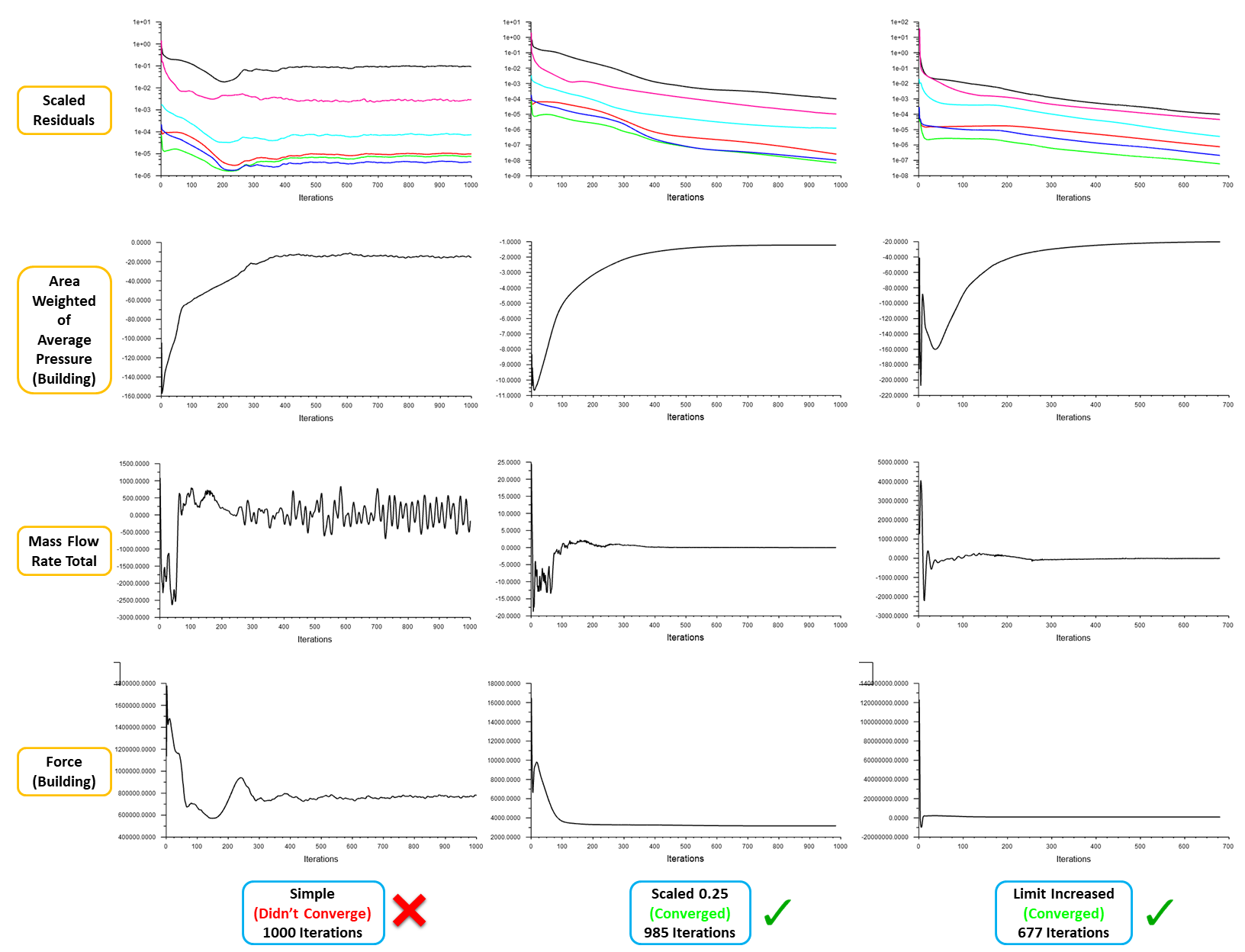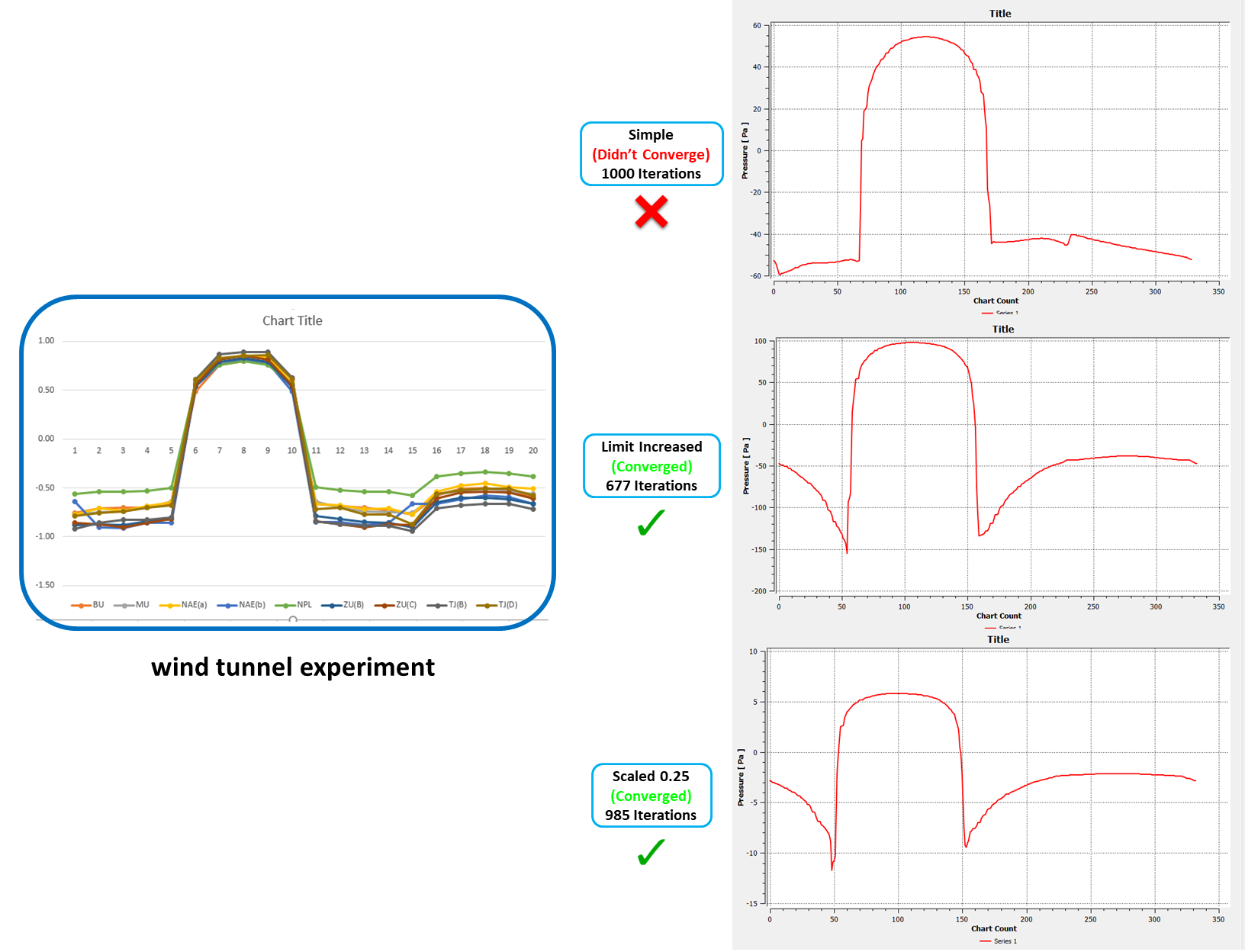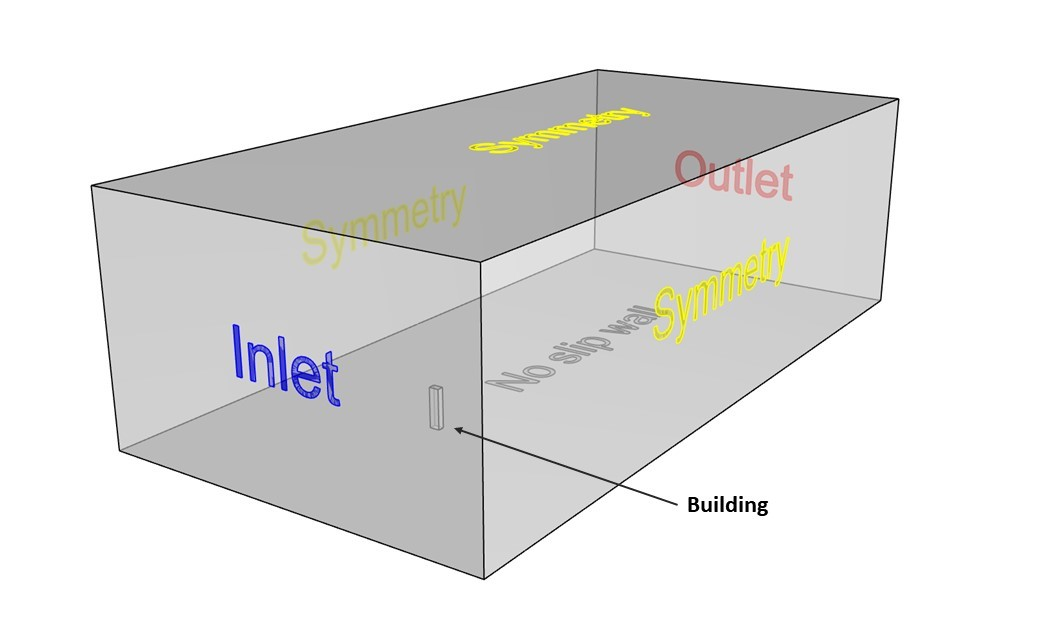TAGGED: cfd, convergence, large-scale, turbulent-flow
-
-
April 16, 2022 at 1:09 pm
aram.alizadegan
SubscriberHi everyone
I am working on a tall building CFD simulation and I need wind forces on building but I have a problem about residual convergence. I have a tall building (30*45*180 m) inside a domain (1800*3600*1440 m) with these boundary conditions:
April 18, 2022 at 10:30 amNikhil Narale
SubscriberHello,
Can you try monitoring the parameter of your interest (for example, pressure or force) and not only the residuals and see if that converges (Reaches to a constant value after some iterations)?
Nikhil
April 19, 2022 at 8:24 amaram.alizadegan
SubscriberThank you very much for your kind reply Nikhil
I have created this comparison to give better understanding about the problem and also yesterday I understood from this tutorial (/courses/index.php/courses/basics-of-turbulent-flows/lessons/simulation-exampleshomework-quizzes/topic/wind-flow-between-two-buildings-simulation-example/), that if I increase the Maximum Turb. Viscosity Ratio from Limits to 1e+10, the equations will be converged.
 In all three models (simple without scaling, scaled and increased Maximum Turb. Viscosity Ratio) pressure and force amounts Reach a constant value. but only in simple model, the building's pressure distribution is similar to the results of wind tunnel experiments approximately.
In all three models (simple without scaling, scaled and increased Maximum Turb. Viscosity Ratio) pressure and force amounts Reach a constant value. but only in simple model, the building's pressure distribution is similar to the results of wind tunnel experiments approximately.

 In this situation, Which way should I use? And if the residuals don't converge but the amount of pressure and force reach a constant value, are they correct?
In this situation, Which way should I use? And if the residuals don't converge but the amount of pressure and force reach a constant value, are they correct?
April 19, 2022 at 11:02 amRob
Forum ModeratorThe viscosity ratio limiter is designed to stop solutions running away with silly values. Unfortunately, built environment models tend to cover length scales that require a higher value on the limiter: I typically add 3-4 0s to the limit before starting a run. The reason it's not converging when you hit the limiter is (I think) covered in the Theory Guide.
Coming back to monitors, residuals etc. The residual is a function of the error in the model. If you have any transient effects in a steady solver (eddy shedding or more commonly wake movement) residuals will stick at around 1e-2 or so. The bulk of the flow is stable, but bits aren't. We then use monitors of useful numbers (temperature, pressure, velocity etc) to see if the values we're interested in are changing, and if so, by how much. It's then for you to decide if the residual is low enough, the monitor is constant enough and the flux balance near enough to use those results.
April 21, 2022 at 6:15 amaram.alizadegan
SubscriberHi rob
Now I understand what happens
I appreciate the information and advice you have shared.
thanck you
April 21, 2022 at 8:42 amRob
Forum ModeratorYou're welcome.
Viewing 5 reply threads- The topic ‘Why the residuals do not converged in a high-rise building CFD simulation?’ is closed to new replies.
Ansys Innovation SpaceTrending discussionsTop Contributors-
2788
-
965
-
851
-
599
-
591
Top Rated Tags© 2025 Copyright ANSYS, Inc. All rights reserved.
Ansys does not support the usage of unauthorized Ansys software. Please visit www.ansys.com to obtain an official distribution.
-
The Ansys Learning Forum is a public forum. You are prohibited from providing (i) information that is confidential to You, your employer, or any third party, (ii) Personal Data or individually identifiable health information, (iii) any information that is U.S. Government Classified, Controlled Unclassified Information, International Traffic in Arms Regulators (ITAR) or Export Administration Regulators (EAR) controlled or otherwise have been determined by the United States Government or by a foreign government to require protection against unauthorized disclosure for reasons of national security, or (iv) topics or information restricted by the People's Republic of China data protection and privacy laws.










